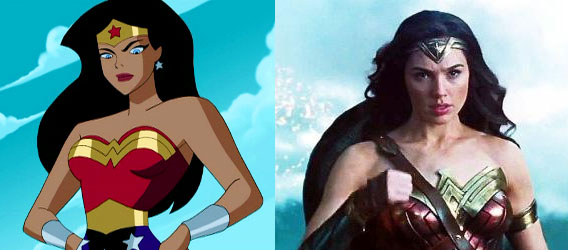More Similar to or Different from You – How Do You Like Your Protagonists?
More Similar to or Different from You – How Do You Like Your Protagonists?
I remember reading a blog post a year or so ago about the trend toward awful/bitchy/ugly/unpleasant – fill in your own blank – heroines. People are bored with nice girls finishing first, or so the assertion was made. I gotta tell you, I resisted that one. A lot. Still do. While I might want a badass heroine like Gal Godot in Wonder Woman, I also want a heroine I can root for. A fully drawn, complex character, but one who underneath it all is a pretty decent human being. (That would probably be the one flaw in Wonder Woman – she wasn’t all that fully drawn because the focus was the action.) The above-mentioned story seemed to be mocking decent female characters, implying they were weak, uninteresting, and not worth caring about.

So I ask – as a reader, are you drawn to characters who are more like you, or more different from you? Same question for the writers in the room: are you more likely to create a character who is exactly like you or starkly dissimilar? Add your comments below!
In Stan Finds Himself on the Other Side of the World, the protagonist is a timid, privileged white guy of 30. He’s afraid of everything – including most people, so he holds them in disdain. Can’t be bothered to strike up a conversation with anyone he doesn’t already know – which makes it pretty hard to meet new people. He goes out of his way to avoid social situations. He’s good at math, prefers order to chaos, plans everything welllll in advance. In other words, the complete opposite of me.
The second main character, Paula – she’d probably be nominated as Supporting Actress if we were talking about an Oscar role – is a lot more similar to me.
So why’d I do arrange the characters that way? Well, for one, it wouldn’t be a very interesting story for an outgoing guy who loves people to go around the world. He might have a great time, but he probably wouldn’t learn or grow very much. But why isn’t the main character a woman? There’s the small matter that this story was developed out of a real conversation I had with a male friend, the person on whom Stan was initially patterned.
So how did I write the character? When I started, I just thought, “What would Tom do?” Eventually, though, Stan became Stan and wasn’t so similar to Tom anymore – and I was able to ask myself, “What would Stan do?”
It also helps to have a pretty good sense of people. I’m still looking for 30-year-old male beta readers to test-drive the book, because I want to be sure the dialogue is realistic. Other men have told me it is, but not guys as similar to Stan as I’d like to hear from. If that’s you – give me a holler and I’ll get you an ARC (advance reader copy). So I know people. I like people. I pay attention to people. I like character-driven books, movies, and TV shows. And I’ve also studied a variety of personality profiles. You may be familiar with Myers-Briggs, DISC, and the Enneagram. Just in case you’re wondering, Stan’s profiles for each of those are below.

Time will tell whether I’ve written Stan’s character as realistically as I think I have – or whether that even matters. My second novel is about a man, too. It also came out of a real event. But the details about that are for another day. In the meantime, I’m finishing this draft so I can start the rewrites.
____________________
Laura’s first novel, Stan Finds Himself on the Other Side of the World is forthcoming in early 2018. Watch here for updates – and prepurchase your signed copy here.

Leave a Reply
Want to join the discussion?Feel free to contribute!